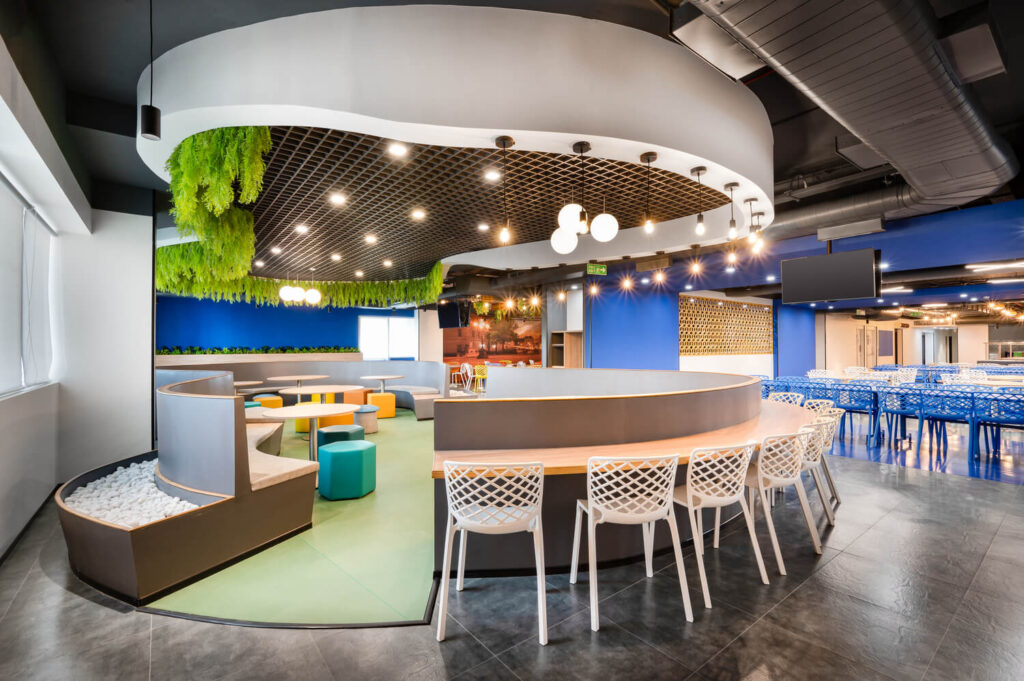A recent report shows alarming statistics regarding employees’ mental and emotional health, leading to the question: “What can companies do to improve employee wellness?”
Is it the same cycle of introducing yoga sessions, meditation workshops, and mindfulness training? The answer is a big no. The real question is, “How does your employee feel when they enter your office?”
The Power of Colors – Go beyond generic solutions.
Colors have a profound impact on mood, more than we realize. Specific color choices can dramatically influence the ambiance of an office. Shades of light blue and green are perfect for areas where concentration is needed, as they have a calming effect. Consider using muted blue tones for workstations and green accents in meeting rooms to encourage relaxation and focus. Yellow, when used sparingly, can boost creativity and optimism, making it ideal for brainstorming zones.

Lighting Matters, Especially Natural Light.
Natural light is a game-changer for employee wellness. Large windows with sheer curtains allow maximum daylight to filter in, promoting alertness and energy. Where natural light is limited, opt for full-spectrum LED lighting that mimics daylight, reducing eye strain and fatigue. Warm ambient lighting can create a cozy atmosphere in lounge areas, while task lighting with adjustable brightness is ideal for workstations. Avoid harsh fluorescent lights, as they can often lead to headaches and a sense of fatigue.

Creating Unwinding Spaces
Apart from colors and lighting, creating designated spaces where employees can unwind is crucial. Recreation areas, game zones, or work cafes provide an opportunity to take a break, de-stress, and recharge. These spaces help in breaking the monotony, allowing employees to interact, relax, or even brainstorm ideas in a more relaxed setting, ultimately leading to higher levels of creativity and job satisfaction.

Things to Avoid
- Bright red or overly intense colors: These can cause stress and agitation if used excessively.
- Cold, clinical lighting: It can make the office feel sterile and unwelcoming.
- Fake plants: They lack the air-purifying benefits and can detract from an authentic, vibrant workspace.

In conclusion, improving employee mood and mental well-being isn’t about one-size-fits-all solutions. It’s about creating a workspace that feels welcoming, inspiring, and conducive to both productivity and relaxation. By thoughtfully incorporating colors, lighting, and unwinding spaces, companies can foster an environment that truly supports the mental and emotional health of their employees.

